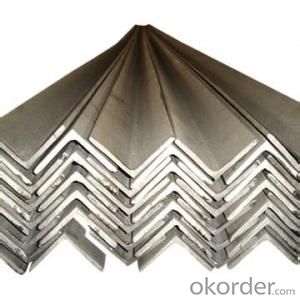Packaging & Delivery
| Packaging Details: | standard seaworthy package,each bundle is fixed at lest three strips ,or on customer's request |
|---|---|
| Delivery Detail: | 15-30 days after receiving L/C or prepayment of T/T |
OKorder Service Pledge
OKorder Financial Service
You Might Also Like
Standard:ASTM, GB, JIS
Dimensions:25x16x3-200x125x18
Grade:Q195-Q420 Series
Model Number:25x16-200x125
Type:Unequal
Application:construction industry
STEEL:STEEL ANGLES
| Packaging Details: | standard seaworthy package,each bundle is fixed at lest three strips ,or on customer's request |
|---|---|
| Delivery Detail: | 15-30 days after receiving L/C or prepayment of T/T |
hot rolled unequal steel angle bars
size: 25x16x3-200x125x18
thickness:3mm-18mm
length:6m 9m 12m
Shipment:with bulk vessel or container
Loading port:Tianjin port china

Send your message to us
OKorder Service Pledge
OKorder Financial Service
Similar products
Hot products
Hot Searches
Related keywords